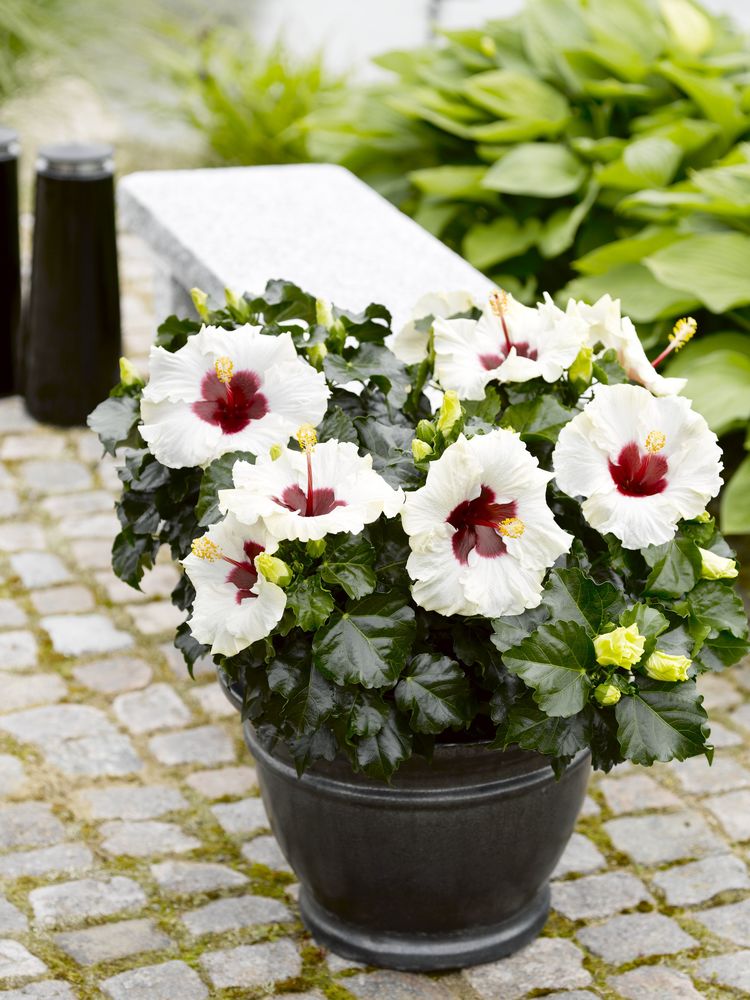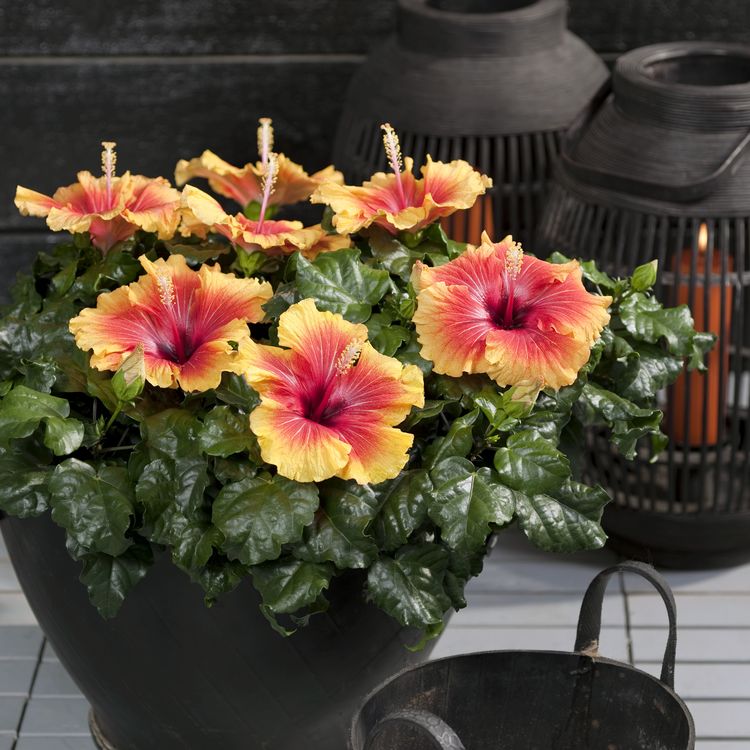HibisQs® loves the sun
The exotic Hibiscus loves sunlight and must be placed in a bright spot. Hibiscus should be watered regularly, but never be left with its roots flooded in water. Your Hibiscus can be kept for many years. With a little "green fingers", fertilizer and fresh soil in new pot every second year, you will achieve a long and generous partnership. Hibiscus, likes many plant, benefit from a trimming once a year - especially in the late winter or early spring.
Hibiscus is also suitable as a "summer bedding plant". It will, with its large flowers in bright colors, give an exotic presence and standout in any garden it prides. To get the absolute best outdoor Hibiscus experience, we recommend you plant your Hibiscus when the night temperature is above 12°C (54 °F) and it will keep flowering until the frost sets in. Hibiscus is however not winter hardy.
Outdoor Hibiscus flourishes best in warm and sunny places, as balconies, terraces and courtyards. The plants will be conspicuous and enjoyable in decorative pots, jars or freely planted in beds in the garden. Fertilizer is not necessary during summer time.
Hibiscus’s History
Hibiscus originates from China, South East Asia and the Polynesian islands, hence its Latin name Rosa Sinensis, or "Rose of China”. It is a subfamily of flowering plants in the mallow family, Malvaceae. The generic name is derived from the Greek word hibiskos, which was the name Pedanius Dioscorides gave it. Hibiscus needs and loves sunlight. It should be given as much light as possible on its way to the consumer. Sunlight is the only and most important requirement the Hibiscus needs to flower and keep on flowering.
Today active and targeted refinement, breeding and development, has meant that the Hibiscus is available in a wide range of strong and clear colors. The flowers are large, conspicuous, trumpet-shaped, with five or more petals, ranging from white to pink, red, orange, purple, yellow or bi-color and from 4-24 cm broad.
The latest breakthrough has led to prolonged sustainability (up to 3 - 5 days) in each flower for some varieties. This series of varieties are marked under the name HibisQs®.
Hibiscus Anecdotes
Ancient medical writings postulated that if we eat buds of white hibiscus flowers early in the morning on an empty stomach, it will cure all diseases.
Flower improves digestion. Therefore, raw flowers are being eaten by Hawaiian and Chinese, to this day.
The natural minerals found in hibiscus flowers have a positive effect on your hair.
The natural oils in the flower serves as a good conditioner.
The oil from the hibiscus flower could be used on the skin of patients suffering from cellulites.
Jamaicans are using the flower in herbal tea, because of the high content of minerals and vitamins.
The fiber derived from hibiscus is a special strong quality. This is used in the manufacturing of clothing, nets and paper.
If hibiscus roots boils until water is evaporated it yields a fat oily balm. This oil is used to treat wounds.
The red hibiscus flower is traditionally worn by Tahitian women. A single flower is tucked behind the ear. this is used to indicate the wearer's availability for marriage.








